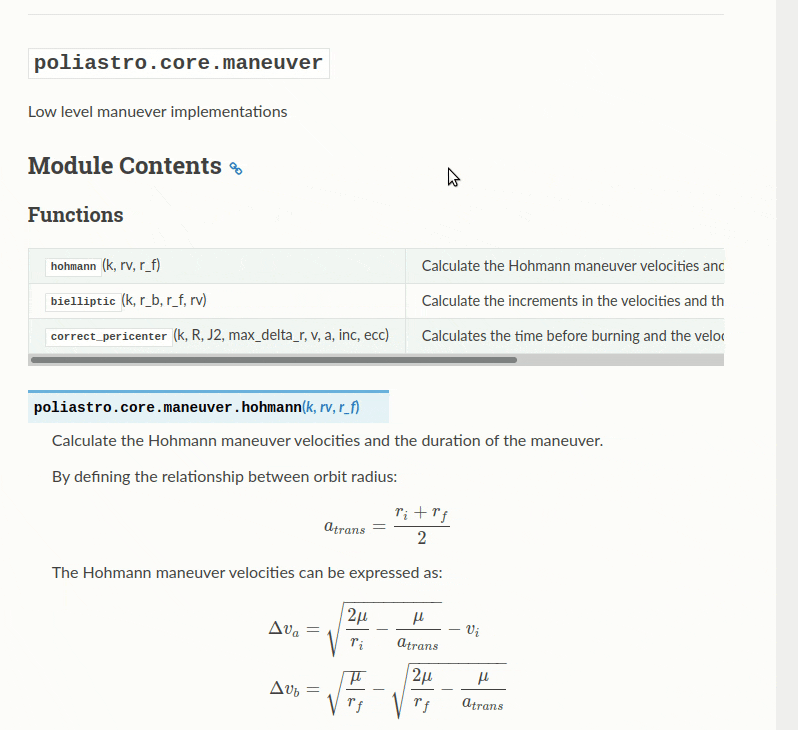Announcing Embed API v3 and sphinx-hoverxref 1.0¶
We are thrilled to announce the availability of Read the Docs Embed API v3, along with its official client, sphinx-hoverxref 1.0. This work has been possible in part thanks to the the CZI grant we received.
The value of content embedding¶
As we wrote in our first blog post about sphinx-hoverxref, one of the most powerful features of Sphinx is the possibility of creating cross references to other documentation projects. However, a reader finding several links in a technical documentation might need to open several browser tabs to fully understand the context, resulting in a lot of friction in the form of context switching.
One way of mitigating the problem is to show a small preview in the form of tooltip or modal with the contents of the link. This is where the Embed API and sphinx-hoverxref come in.
sphinx-hoverxref is a Sphinx extension that addresses this problem by adding tooltips on the cross references of the HTML documentation with the content of the linked section. To do so, it inserts a small JavaScript file that calls the Read the Docs Embed API when the user hovers any link. Back in June we announced intersphinx support in sphinx-hoverxref 0.6b1, which allowed users to include modals and tooltips also for cross references to other projects.

sphinx-hoverxref displaying a tooltip including an equation¶
Some big projects already using it include Tweepy, a Python client for Twitter, and Scrapy, a framework for crawling websites.
Embed API v3 and sphinx-hoverxref 1.0¶
After some months of work, we are excited to publish v3 of our Embed API, and with it, version 1.0 of sphinx-hoverxref.
Among other things, the new versions allow you to embed content from pages hosted outside Read the Docs. For security reasons, we have an allowlist of such external domains that currently includes Python, NumPy, SciPy, SymPy, and we would like to invite the community to suggest more domains to add.
Other additions and fixes include:
- Support for JS and CSS assets in Sphinx 4.1+.
- Support for
glossary/termand sphinxcontrib-bibtex. - Avoid showing the browser built-in tooltip for links that have the extension enabled.
Finally, version 3 of the Embed API paves the way for supporting non-Sphinx projects in the future.
Embedding content with sphinx-hoverxref¶
To use sphinx-hoverxref in your Read the Docs project, declare it as part of your dependencies:
sphinx==4.3.1
sphinx_rtd_theme==1.0.0
sphinx-hoverxref==1.0.0
And add it to your list of Sphinx extensions:
extensions = [
# ...other extensions
"hoverxref.extension",
]
To enable the extension on all :ref: of your documentation,
set the hoverxref_auto_ref to True:
hoverxref_auto_ref = True
And you will start seeing tooltips on your internal references.
Apart from :ref: roles, you can also enable tooltips on:
- Code objects from any Sphinx domain,
- Glossary terms,
- BibTeX citations,
- Pages containing extra JavaScript like sphinx-tabs and MathJax,
- Intersphinx references,
- And custom objects!
Note
sphinx-hoverxref includes the JavaScript embed client in the HTML assets, but it is not yet available as a standalone library that can be reused with standard frontend packaging tools. If you would like to see this happening, let us know.
Calling the Embed API directly¶
As explained in our embedding guide, you can call the API directly from any HTTP client:
$ curl -s "https://readthedocs.org/api/v3/embed/\
> ?url=https://docs.readthedocs.io/en/latest/features.html\
> %23read-the-docs-features" | python -m json.tool
{
"url": "https://docs.readthedocs.io/en/latest/features.html#read-the-docs-features",
"fragment": "read-the-docs-features",
"content": "<div class=\"section\" id=\"read-the-docs-features\">\n<h1>Read the Docs ...",
"external": false
}
Or visually explore the query in the web interface instead.
The reference documentation includes more detail about the parameters and return values of the API.
Try it out!¶
We would like to invite the community to try out these features and send us feedback. With the help of our users, we will keep moving towards a more cohesive documentation ecosystem of interlinked Python projects.
Considering using Read the Docs for your next Sphinx or MkDocs project? Check out our documentation to get started!